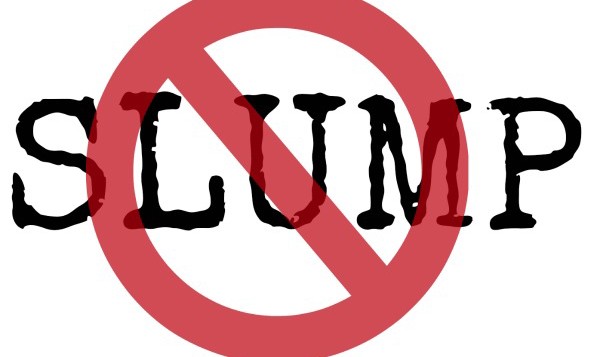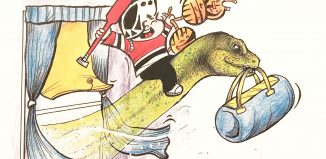What Makes a Slump a Slump?
Back in November (oh, those halcyon days), Penguins forward Evgeni Malkin scored against the New York Islanders and everybody went nuts. He was coming off a 15-game “scoring drought” that had been stressing out every sports analyst in the league (not to mention, probably, Evgeni Malkin).
After his goal against the Islanders, Chris Peters for CBS Sports wrote:
“With each passing game, the questions grew louder … For weeks it had looked like Malkin was passing up some golden opportunities by distributing the puck to a teammate instead of trying to bury the shot himself. This time it was Neal being extra generous.” (source)
Everyone was happy to have Malkin at the back of the net, and within a few games he shot up to second overall in the NHL, behind teammate Sidney Crosby.
Well, I say “shot up.” Considering the fact that he’d been in fourth place for assists during that long “slump,” it was really more of quick jog. Going into the game against the Islanders, Malkin had registered 19 assists throughout the season–14 of them during the so-called slump. Despite not scoring until the game against the Islanders, he was awarded the second star of November, leading players in assists (21 total) and points (25). It was the most any NHL player had managed since Wayne Gretzky in 1996.
1996!
In other words, Malkin might not have been the last one to touch the puck, but he was still helping generate goals. Points are given for assists because goals aren’t (usually) created in a vacuum.
I’m using Malkin as an example because it’s the obvious one. Even without a goals, he was still ranking amongst the highest in points, both overall and for assists. He was still contributing every game, and contributing in a big way.
CBJ followed their eight-game win with a three-game dip, and were again said to be slumping. They’re 11-4-0 since January 1, tying Anaheim for the second-best record in that time. They’re currently seventh in the NHL for goals-per-game. Also, they’re 14th overall, which is a huge jump from where they were at the beginning of January (23rd).
The problems that CBJ faced in the three games between the end of their streak and their win against D.C. weren’t the same ones that plagued them in the early parts of the season, when they battled with late-game meltdowns and inconsistency of game play, still asking themselves what kind of team they wanted to be.
During the streak, they stopped asking. When they lost against Buffalo, Carolina, and Ottawa, they had answered the question–they just weren’t very good at it. But they weren’t good at it the way that people aren’t immediately good at bowling; after that first strike, you’re going to get a few gutterballs. They weren’t slumping. They were adjusting.
So, do three games make a slump? Do four? Do 14?
Hockey writers and analysts are obsessed with that word, but I don’t think it means what we think it means. “Slump” is defined (as is relevant to this article) as, “a sudden severe or prolonged fall in value; a period of substantial failure or decline.”
None of those things applied to Malkin, who might not have been netting goals but was certainly helping produce them. Was he substantially failing the Penguins while he was registering 19 assist points? Did his value as a player fall because the pucks hitting the back of the net hit someone else’s stick?
What I’m really asking is: do we overvalue goal scorers and undervalue goal makers?
Actually, I’m not asking. I’m saying it. The “slump” narrative is an easy one to write about. Malkin wasn’t slumping; neither was CBJ. (Edmonton. Edmonton is … probably slumping.) It’s too broad a word, not nearly nuanced enough to talk about what is happening on the ice. Games are measured in goals, but teams and players shouldn’t be. There’s too much that goes into them. Goals happen because a lot of different factors come together, from goalie to forward. Goals are the cherry on top of a hockey sundae.
I’m not saying you can’t enjoy the cherry. But maybe we should reconsider judging the entire dessert by a single one of its toppings.














